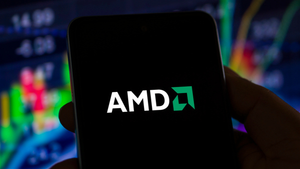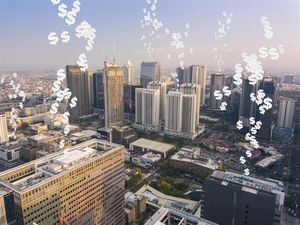The world of visual art is on the brink of a paradigm shift, with artificial intelligence and high-tech digital designs breaking new ground. But the days when these were matters of purely human creativity and manual dexterity are being reconfigured to an extent that is now, in certain respects, undergoing a fundamental transformation under technological innovation. The work of visual content creation and delivery has changed more in the last 5 years than ever before, from idea to realisation. This revolution is most strongly felt in Art and Illustration Services, where these innovations are not so much replacing artists as benefiting them, liberating them to reach greater heights of creativity, productivity and market-readiness.
The Rise of AI-Assisted Creative Processes
Artificial intelligence has become a creative partner to illustrators, changing the way they work. Now artificial intelligence can come up with initial visual concepts, recommend colour palettes and even produce full compositional layouts describing the result in simple text prompts. This doesn’t replace human creativity, but it speeds up the early part of the process so artists can try many directions and prototypes, and zero in on what works best. For those in the business of Art and Illustration Services, this means that clients can see more ideas faster and on a high level, while artists can focus even more of their time on the stuff that is too subtle to do with an algorithm.
Digital Tools Enhancing Traditional Skills
Modern digital illustration tools are extremely advanced, with a wealth of tools and capabilities that once would have been considered science fiction. Tools such as Adobe Fresco with live brushes that replicate actual watercolor and oil painting, or Procreate’s animation capabilities, have expanded the realm of what artists can do digitally. These are the kind of developments that have paved the way for Art and Illustration Services to produce work that looks like traditional art but has all the benefits of being digital. Artists are able to play with new ideas without the risk of making permanent mistakes, try multiple iterations with ease and accommodate client changes in a matter of minutes without ever having to leave their project.
Streamlined Collaboration and Client Interaction
he rise of cloud-based applications and real-time collaboration tools. This very combination has reinvented how illustrators engage with clients as well as others in the creative chain. Digital workspaces facilitate the easy sharing of works-in-progress, immediate feedback and concurrent editing in different locations. This has greatly sped up the revision process by eliminating the back and forth that has historically plagued projects. For companies employing Art and Illustration Services, this translates to more efficient communication, quicker delivery times, and a greater number of chances to collaborate during the creative process, which in turn enhances the result.
Democratization of Specialized Techniques
Specialized artistic practices are becoming more accessible to a wider spectrum of creators with advanced digital tools. Complicated procedures such as perspective correction, lighting simulation and texture placement which once took years of precise skill can now be supported by intelligent software functions. This is not to undermine the importance of a professional artist, but Art and Illustration Services can approach a wide range of projects with more confidence due to this. The upshot is better quality work in the industry and more room for artists to experiment with their style and technical range.
Personalization at Scale
AI and digital tools have enabled a new way of generating custom illustrations at scale. Algorithms can now create versions of a main illustration for different audiences, contexts, or marketing use cases that are consistent with one another stylistically. This is especially useful for companies that need high volumes of custom visual content, like marketers and publishers. Professional Art and Illustration Services can use these tools to provide clients with elaborate solutions that would be too time-consuming and costly to produce by manual drafting alone.
Preservation of Artistic Style in Digital Workflows
One of the great worries about the advent of AI in art was a world of omniformity, all worlds unified beneath an idealised style. For now, though, it is actually the most sophisticated tools that are helping artists reinforce and sustain their individual visual voices. Machine learning models can be trained to identify and copy a specific artist’s style, so that with each new inspired project the look stays consistent while derivatives remain faithful to the artist. This means that when clients engage Art and Illustration Services, they can be assured that the end product will retain an artist’s signature style but be done more efficiently with technology.
New Frontiers in Interactive and Dynamic Illustration
Illustration is evolving into interactive and dynamic mediums beyond static pictures, thanks to digital tools. Now illustrators can also build things that react to user input, update data, have animation mixed into them, all in the same world where they made their original illustration. This increase in options now means that Art and Illustration Services can provide clients with a more well-rounded visual solution, whether it’s an animated logo or infographic, or an entirely illustrated digital experience to captivate audiences and bring ideas to life.
The Evolving Role of the Modern Illustrator
Instead of rendering human artists obsolete, AI and those digital tools are changing artists’ roles, pushing them in more conceptual directions. Today, illustrators are doing less making-of and more concepting, problem-solving, and triple-checking the art serves its project. This evolution has added value to professional Art and Illustration Services, with illustrators becoming strategic partners who help clients navigate complex visual terrain and utilize technology to realize their fresh ideas in a streamlined and powerful manner.
The combination of AI, high-tech tools, and digital innovations doesn’t mean the end of traditional illustration as much as the next phase in its evolution. With the adoption of these technologies, Art and Illustration Services can extend their range of services to new markets and can provide more value to clients in any vertical. The future of illustration is in the seamless convergence of human creativity and technology, resulting in art that’s creatively engaging and commercially strong for our increasingly digital society.





